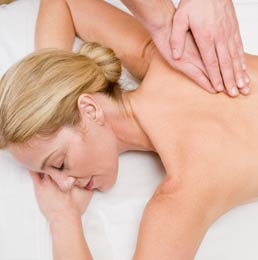
Massage therapy — the use of massage techniques by a trained professional to enhance health and well-being — is growing in popularity. A 2006 survey by the American Massage Therapy Association found that more than one in six US adults gets a professional massage every year, and pain relief is often cited as the reason. Up until lately, though, the possible benefits of massage hadn't been carefully studied in people with osteoarthritis. A randomized controlled trial (Archives of Internal Medicine, December 11/25, 2006) — high standard in medical research — changed that. It found that the addition of massage therapy to usual care may help reduce pain and improve function in people with osteoarthritis of the knee.
The study included 68 people with knee osteoarthritis, who were randomly divided into a massage therapy group and a control group, which was included for comparison's sake and didn't receive the massage treatment. Those in the massage group received twice-weekly massages for four weeks, then once-weekly massages for another four weeks after that. Swedish massage — the most common type — was used. This form of massage involves long gliding strokes, kneading and tapping on the upper layers of muscle. Everyone in the study also continued their usual medical care.
The study found that massage therapy led to improvements in pain, stiffness, flexibility, physical functioning and walking ability. Most benefits were still evident eight weeks after the massage sessions ended. While more research is needed to confirm these findings, the results are encouraging. They're also consistent with the benefits seen in studies involving other kinds of arthritis.
Besides Swedish massage, several other types of massage are available. All involve rubbing, kneading, pressing or otherwise manipulating the muscles and other soft tissues. For example, deep tissue massage is another popular technique that uses slow strokes and firm finger pressure to reach deeper layers of muscle. The exact mechanisms by which massage might work are still being explored. However, some ways that massage might help ease arthritis symptoms include bringing warmth to painful areas, increasing circulation to affected joints and relaxing nearby muscles.
In general, massage seems to have few serious risks if appropriate precautions are taken. Be sure to let your massage therapist know about your osteoarthritis and any other medical conditions you may have. Avoid getting a massage when you're having a flare or coming down with an illness, and don't massage areas where the skin is broken or tender. Also, keep in mind that massage therapy is meant to be used in addition to — not in place of — conventional medical treatment.
Massage therapy has been practiced for thousands of years. It was even used by Hippocrates, the ancient Greek physician known as the father of medicine. Today, it's enjoying a resurgence of popularity as a way to reduce stress and manage pain.
To find a qualified massage therapist, look for one who is licensed by the state and/or has the credential Nationally Certified in Therapeutic Massage and Bodywork (NCTMB). Ask about education as well, and look for a graduate of a program accredited by the Commission on Massage Therapy Accreditation. The American Massage Therapy Association offers an online directory (www.amtamassage.org). Beyond that, your doctor or local hospital may be able to refer you to a massage therapist who has experience with osteoarthritis.
PLEASE NOTE: The studies and their findings that are presented in this article are for informational purposes only and are not meant to take the place of the advice of your doctor. By providing you with this information, Sanofi is not endorsing its content nor does it represent that the information is necessarily appropriate for you. You should consult with your doctor before starting any new health or exercise regimen.
References"Massage therapy: not just a trend." American Massage Therapy Association. Available at: http://www.amtamassage.org/research/Consumer-Survey-Fact-Sheets/2006-Massage-Therapy-Consumer-Survey. Accessed September 6, 2011.
"Massage Therapy for Osteoarthritis of the Knee: A Randomized Controlled Trial." A.I. Perlman et al. Archives of Internal Medicine. December 11/25, 2006, vol. 166, no. 22, pp. 2533-2538.
“Choosing a Type of Massage.” American Massage Therapy Association. Available at: http://www.amtamassage.org/findamassage/massage_type. Accessed September 6, 2011.
“Consider massage.” Arthritis Foundation. Available at: http://www.arthritis.org/pain-center-massage.php. Accessed September 6, 2011.
“Massage therapy as CAM.” National Center for Complementary and Alternative Medicine. Available at: http://nccam.nih.gov/health/massage. Accessed September 6, 2011.
“Alternative Treatments for Arthritis: An A to Z Guide.” D. Foltz-Gray. Atlanta, GA: Arthritis Foundation, 2005.
“Finding a qualified massage therapist.” American Massage Therapy Association. Available at: http://www.amtamassage.org/findamassage/find. Accessed September 6, 2011.